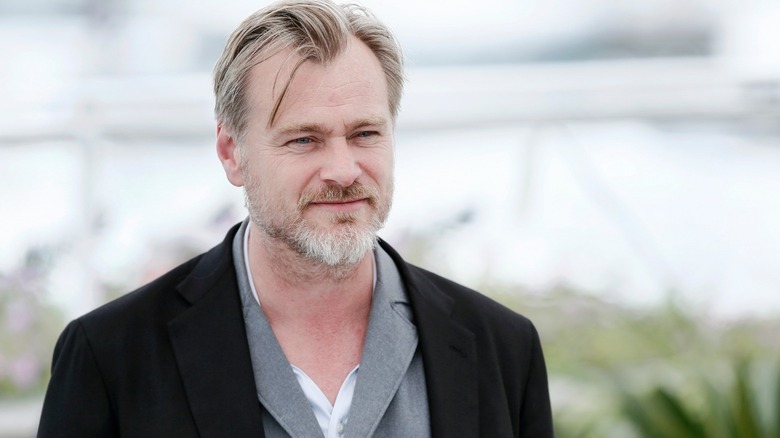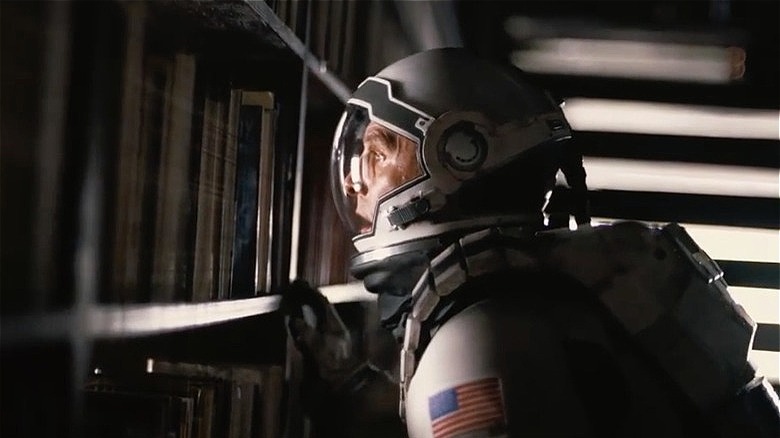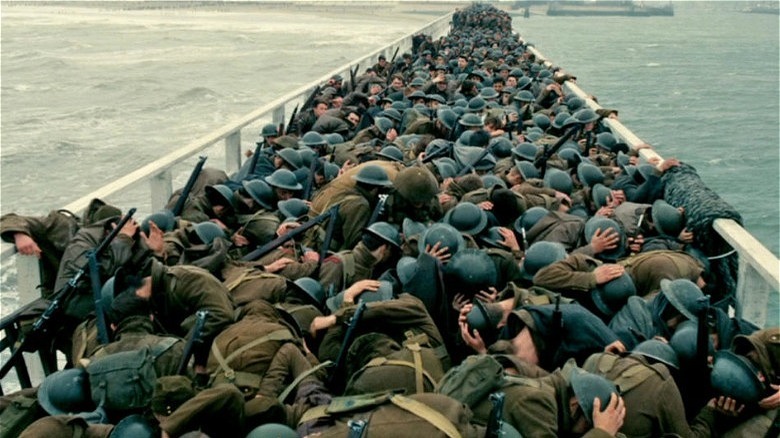The Many Inspirations Behind Christopher Nolan's Signature Style
Christopher Nolan is a household name in filmmaking, creating big-budget theatrical epics while still maintaining an intimate hold over his craft. Considering the wide array of genres his filmography explores, it's no wonder that the renowned director's influences run the gamut of everything from hard-boiled detective stories to speculative science fiction.
Despite this variety of storytelling, there's a particular type of narrative style that defines Nolan's films, which tend to follow a non-linear course. Both visually and within the script itself, Nolan likes to experiment with the perception of time and uses editing techniques to shift the audience's idea of continuity. Even in his films that don't involve time travel, Nolan's obsession with temporal manipulation is always present. The unreliable narrators and weaving timelines of Nolan's favorite films and novels informed the director on how to plot out complex stories like the backward-and-forward mystery of "Memento," the dreams-within-dreams of "Inception," and, most recently and literally, the reversibility of time in "Tenet."
From Page to Screen
Nolan's influences, much like his movies, explore shifting timelines and levels of reality. The spring 2012 edition of DGA Quarterly contains a profile on the filmmaker in which he cites literature and cinema that employ these types of themes on the page and the screen. A decade later, Nolan continues to utilize these same styles in his ongoing body of work.
One of his earliest inspirations was "Waterland," a novel written by Graham Swift that Nolan read when he was 16 years old. Both he and literary critics have praised the way "Waterland" shifted between different points of time in order to explore the fine details of local history. Likewise, Nolan also mentions crime fiction novelists James Ellroy, known for his spinning web of Los Angeles noir mysteries (there's a shot of Ellroy's "The Big Nowhere" in "Interstellar"), as well as Jim Thompson, whose unreliable narrators provided a distorted view of the world around them.
Deep Cuts
These novels helped Nolan understand how to write a nonlinear narrative, but translating that kind of fragmented storytelling to a visual medium is another feat altogether. The purposefully disjointed editing of director Nicolas Roeg had a giant impact on Nolan, who cites the sci-fi "The Man Who Fell to Earth" and the crime drama "Performance" as major influences.
It's worth noting just how much of a role editing plays in the way Nolan tells his stories. The filmmaker's extensive use of cross-cutting helps him juggle parallel storylines, even in movies that have nothing to do with hard sci-fi ideas. Sure, this technique helps show how time passes differently in the far-out reaches of space in "Interstellar," but it also ramps up the intensity of the near-wordless military retreat in "Dunkirk" and displays the developing chaos surrounding Batman in "The Dark Knight."
In addition, the dreamlike imagery of "Pink Floyd: The Wall," directed by Alan Parker, gave Nolan an idea of how to visually portray the fluidity of thoughts and memories, while the less abstract, tightly interwoven narrative of the film noir classic "Out of the Past," directed by Jacques Tourneur was a more story-focused influence. Like many filmmakers of his generation, Nolan was also drawn to the famously nonlinear structure of "Pulp Fiction."
Memory and Mystery
Nolan's films focus on protagonists that must figure out new rules and concepts about their environment, whether that's because of short-term memory loss or the complete upheaval of the standard laws of physics. In turn, that builds a sense of uncertainty about the world for both the main characters and the audience. It might not be a shocker, then, that Christopher Nolan cites "Blade Runner" as his favorite movie. Ridley Scott's sci-fi noir classic is a concoction of everything that seems to fascinate Nolan, from a protagonist uncovering a deep mystery to the frailty of memory and dreams. Heck, the origami unicorn and the spinning top in "Inception" are both symbols of how the perception of reality in these films can get so wonky. On the lived-in environment of "Blade Runner," Nolan says:
"The atmosphere of 'Blade Runner' was also important, that feeling that there was this whole world outside the frame of the scene. You really felt there were things going on outside of those rooms where you've seen the film take place. That's something I've always tried to carry with me. Every film should have its own world, a logic and feel to it that expands beyond the exact image that the audience is seeing."
Nolan's focus on worldbuilding brings the viewer along for the ride as they also try to learn how their new surroundings function. Perhaps that drive to invite his audience to solve the narrative puzzle through close observation, to encourage them to piece together details without holding their hand, is why cinephiles hold in Christopher Nolan in such high regard.



